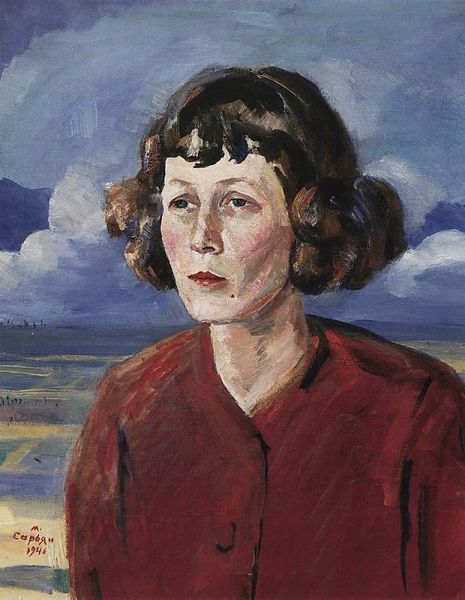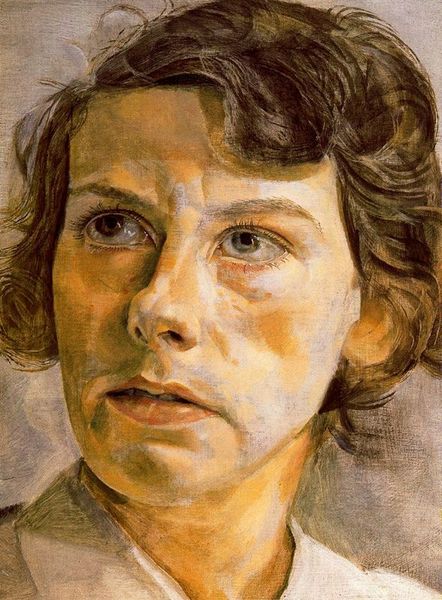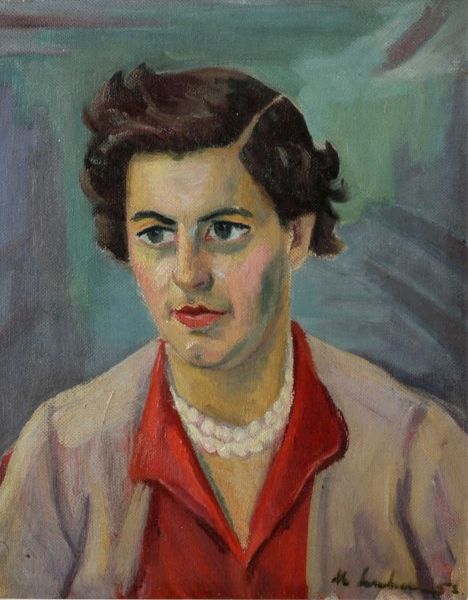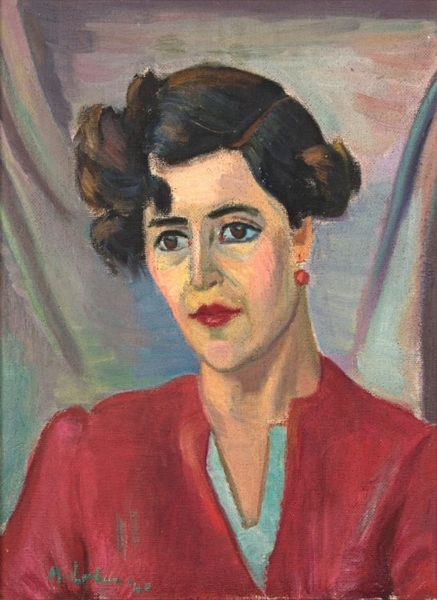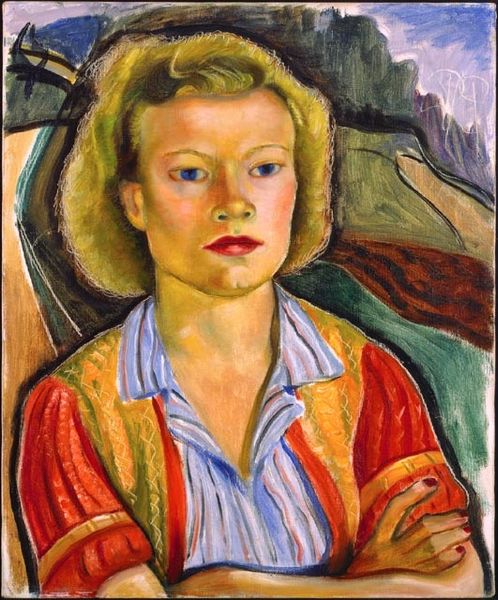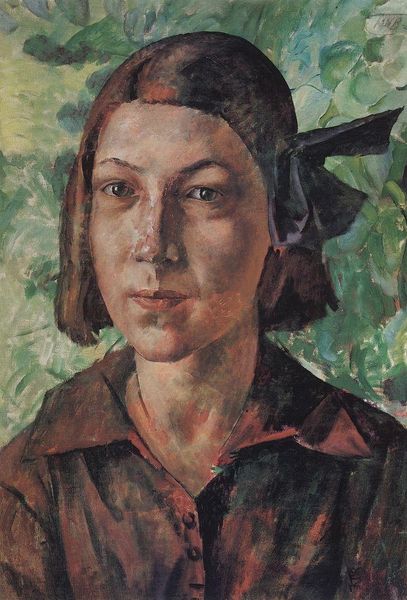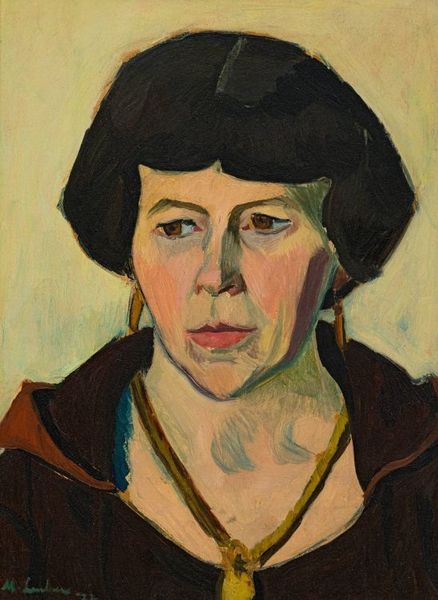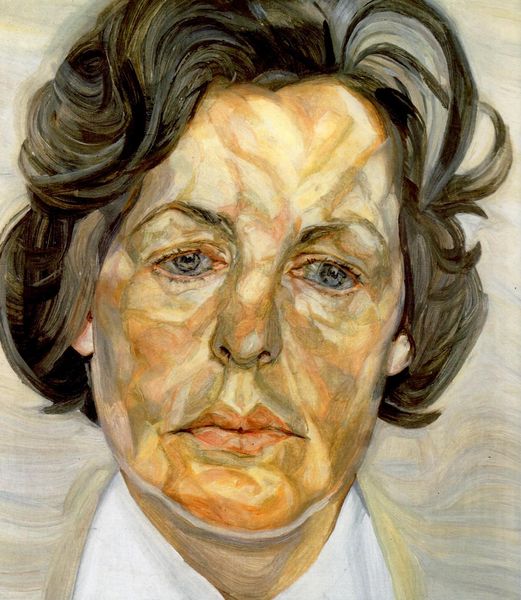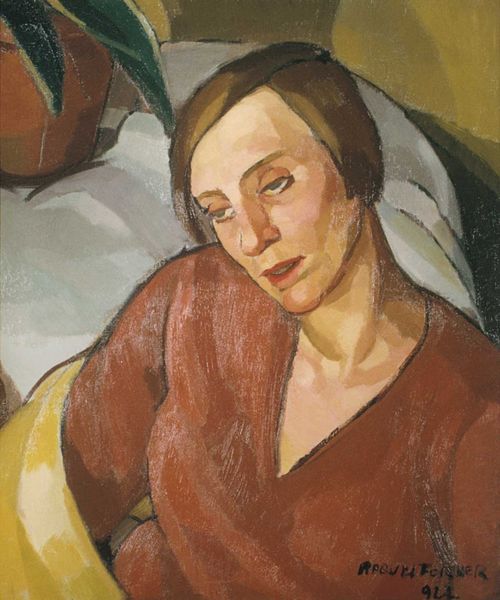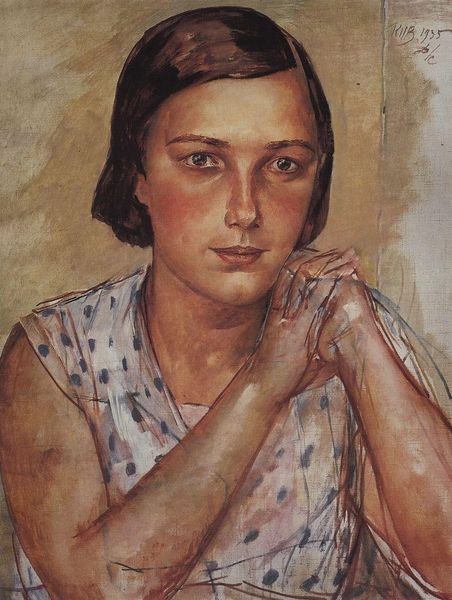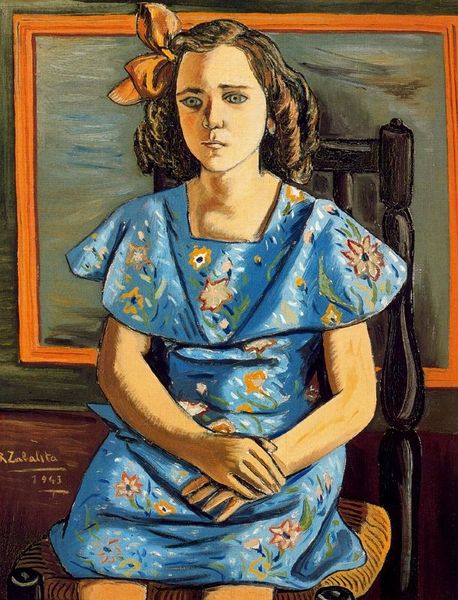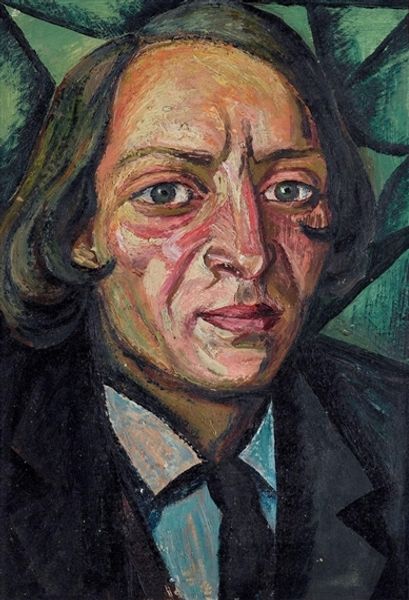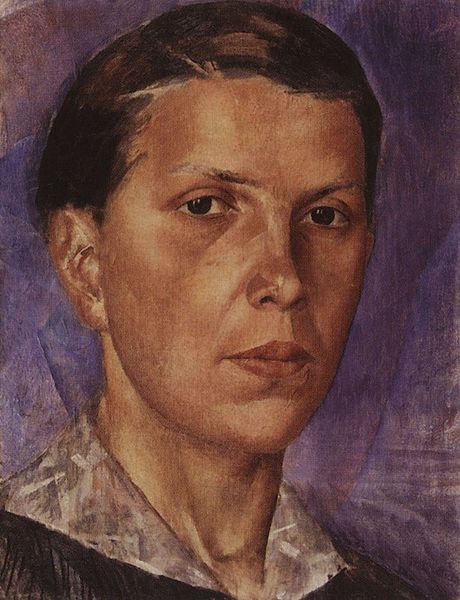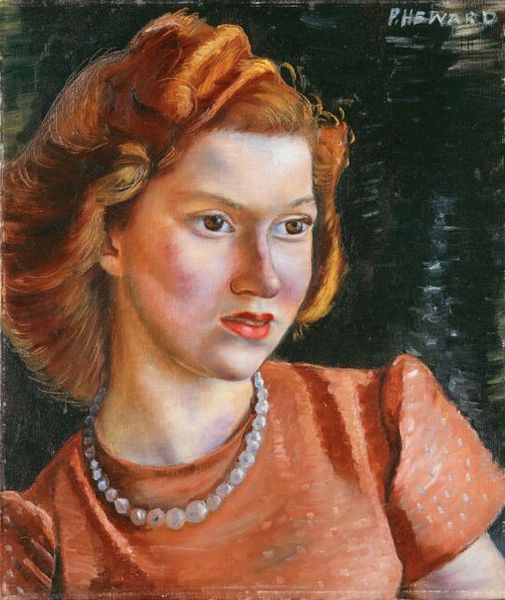
Dimensions: support: 508 x 406 mm
Copyright: © The estate of William Roberts | CC-BY-NC-ND 4.0 DEED, Photo: Tate
Curator: Looking at William Roberts' "Esther Lahr" portrait, now housed in the Tate Collections, I'm immediately struck by the gaze. It feels so direct, yet distant. Editor: There’s a quiet intensity, a sense of someone observing, processing, perhaps even slightly wary. The angular planes of the face give her a sculptural quality. Curator: Absolutely. Roberts' involvement in Vorticism really shines through in the geometric simplification of form. But there's also a palpable human presence that transcends mere geometry. Editor: It’s interesting how Roberts balances that modernist edge with something deeply personal. The portrait avoids the coldness of abstraction, inviting a connection with the sitter. Curator: And isn’t that a testament to the power of portraiture? To capture not just likeness, but a whisper of a life lived? Editor: It is. A fleeting glimpse into another's reality. A wonderful contribution to the history of modern portraiture.
Comments
Join the conversation
Join millions of artists and users on Artera today and experience the ultimate creative platform.
During the 1920s and 1930s Roberts received a number of portrait commissions including one from Charles Lahr for this portrait of his wife. Esther Lahr (1898-1970) was a close friend of the artist's wife Sarah. Born Esther Argeband, in London, of Jewish refugee parents, Mrs Lahr changed her name to Archer before her marriage in 1922. Prior to her wedding, Mrs Lahr purchased a bookshop at 68 Red Lion Street which she subsequently ran with her husband. This portrait hung in the Blue Moon Bookshop from 1925 to 1940 when the picture was removed to the sitter's Muswell Hill home. Gallery label, August 2004
